If you’ve ever tried to tell an Alaskan Malamute apart from a Siberian Husky, you know it can be tricky.
Both dogs have their own charm and appeal, but knowing how to spot the differences can make all the difference for dog owners and lovers alike.
In this article, you’ll discover effective ways to tell these two popular breeds apart.
Whether you’re considering adopting one or just want to impress your friends with your dog knowledge, understanding these key differences will enhance your experience.
Get ready to learn what sets these magnificent dogs apart!
1) Fur Texture Difference
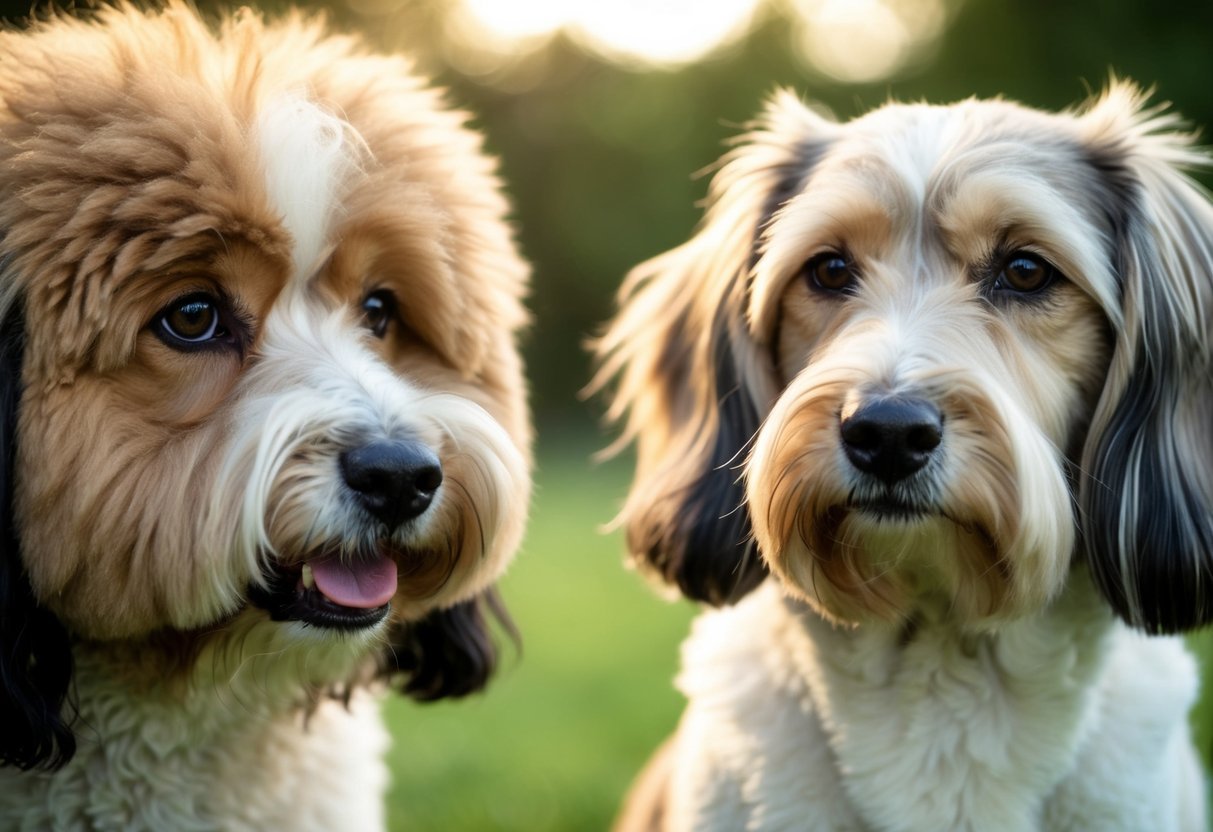
When you look at a Malamute and a Husky, their fur texture can give you some clues.
The Alaskan Malamute has a thicker, denser coat.
This helps them stay warm in cold weather.
In contrast, a Siberian Husky has a softer and fluffier coat.
Their fur is not as heavy, which reflects their different living conditions.
You can also notice the undercoat.
Malamutes usually have a strong undercoat that feels more wiry.
Huskies have a softer undercoat, making them feel more luxurious to the touch.
Another point to check is the grooming needs.
Malamutes tend to shed more, especially when the seasons change.
Huskies shed too, but their fur is often easier to manage.
So, if you’re unsure which breed you’re looking at, pay attention to the fur texture.
The differences can be quite telling.
Distinct Tail Positions
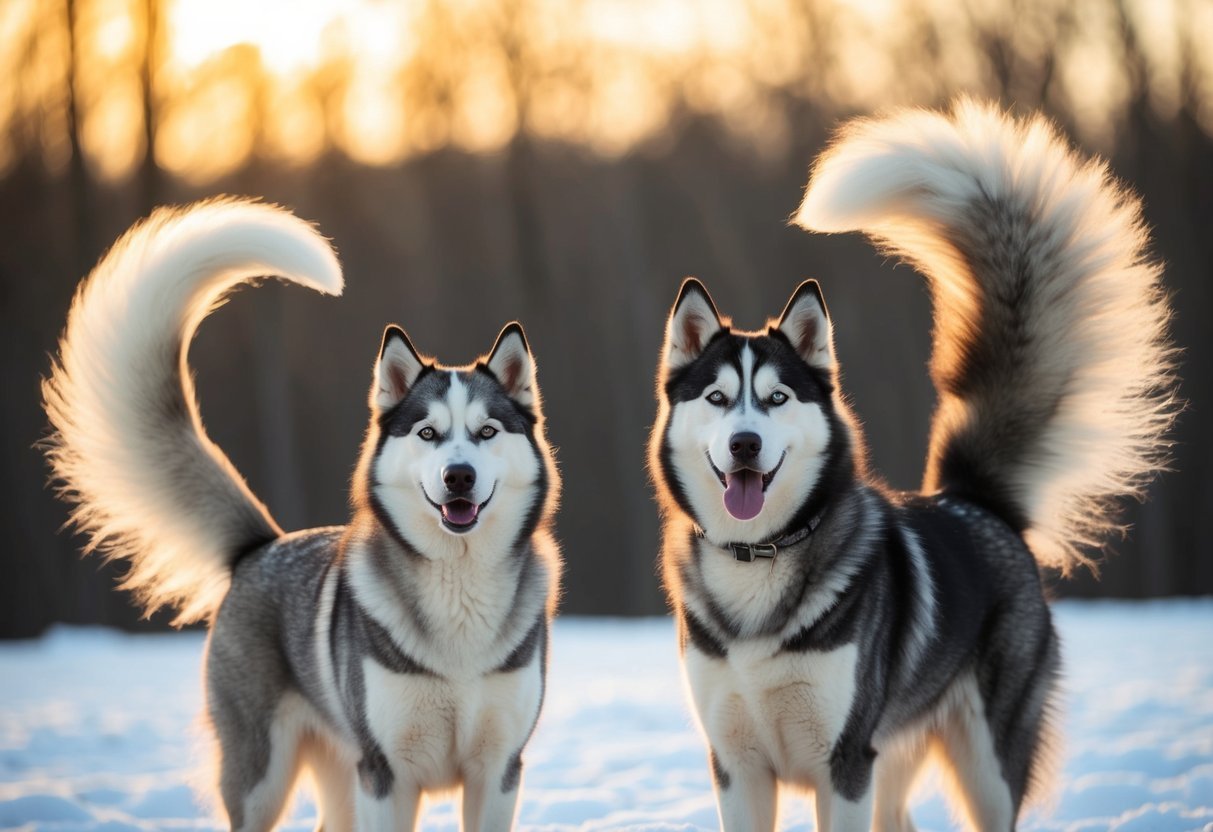
When trying to tell a Malamute from a Husky, look closely at their tail positions.
The tails of these two breeds are quite different.
The Alaskan Malamute has a plumed tail that is often carried over its back.
This tail is bushy and curls towards the body.
It helps keep the Malamute warm when they curl up in the cold.
In contrast, the Siberian Husky has a straighter tail.
It can be held up or slightly arched but rarely curls over the back.
This tail is less fluffy compared to a Malamute’s.
These tail positions are a simple way to spot the differences between the breeds.
Pay attention to how the tail is carried and you’ll have a clearer idea of which breed you’re facing.
Eye Color Variations

When you look at an Alaskan Malamute, you’ll usually see brown eyes.
This is a key trait of the breed.
Malamutes don’t have the gene for blue eyes at all.
On the other hand, Siberian Huskies can have a variety of eye colors.
They might have blue eyes, brown eyes, or even one of each! This condition is called heterochromia and it’s pretty common in Huskies.
If you see a dog with striking blue eyes, it’s more likely to be a Husky.
The unique eye colors are one of their standout features.
So, check those eyes to help determine if your dog is a Malamute or a Husky.
It’s a simple yet effective way to tell these breeds apart.
4) Ears Shape and Size
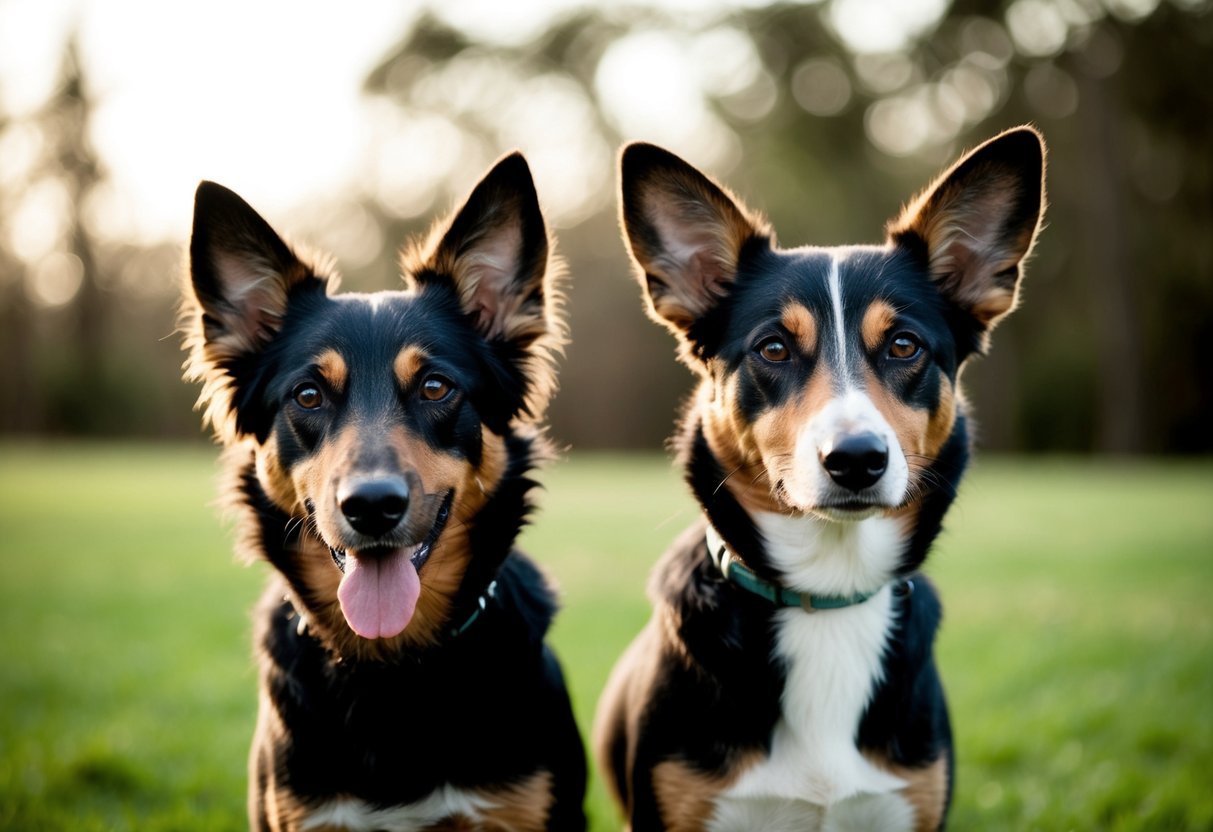
When it comes to spotting a Malamute or Husky, ears are a key feature to notice.
Huskies usually have medium-sized ears that stand upright and are triangular in shape.
Their ears are a bit more rounded at the tips.
In contrast, Malamutes have larger ears that are more rounded and can sometimes flop over.
These ears sit lower on their heads compared to Huskies.
If you see larger, floppy ears, you might be looking at a Malamute.
Pay attention to how the ears are positioned too.
If your dog’s ears are perked up and alert, it’s likely a Husky.
If they droop or are more relaxed, it’s a good sign that you’re looking at a Malamute.
This difference in ear shape and size can help you identify which breed you’re dealing with.
Just look closely, and you’ll see these traits easily!
Physical Differences
When trying to distinguish between a Malamute and a Husky, physical traits can provide clear clues.
Key areas to focus on include their size and build, unique facial features, and tail positions.
These details can help you confidently identify each breed.
Size and Build
The size of these two breeds is one of the most noticeable differences.
Alaskan Malamutes are significantly larger and heavier than Siberian Huskies.
-
Malamutes: Typically stand 24 to 28 inches tall and can weigh between 75 to 100 pounds. They have a stocky, muscular build designed for strength.
-
Huskies: Generally stand about 20 to 23 inches tall and weigh around 35 to 60 pounds. They are more slender and agile, appearing more streamlined than Malamutes.
This size difference makes it easier to tell them apart, especially when they are side by side.
Facial Features
The faces of Huskies and Malamutes differ in several ways that are easy to spot.
-
Malamutes: Usually have a broader, more powerful head with a strong muzzle. Their eyes are almond-shaped and almost always brown.
-
Huskies: Have a more fox-like face, with a narrower snout. They can have blue eyes, brown eyes, or even one of each (heterochromia).
These facial differences make each breed distinct, contributing to their unique appearances.
Tail Position
Bear in mind the tail positions of these dogs when observing them.
-
Malamutes: Carry their tails high and curved over their backs. This posture adds to their majestic look and solid stance.
-
Huskies: Have tails that are also carried high but can be more straight or slightly curved. Their tails often have a more playful swish.
The way they hold their tails can reflect their mood and energy, making it another clue to tell them apart.
Temperament and Behavior
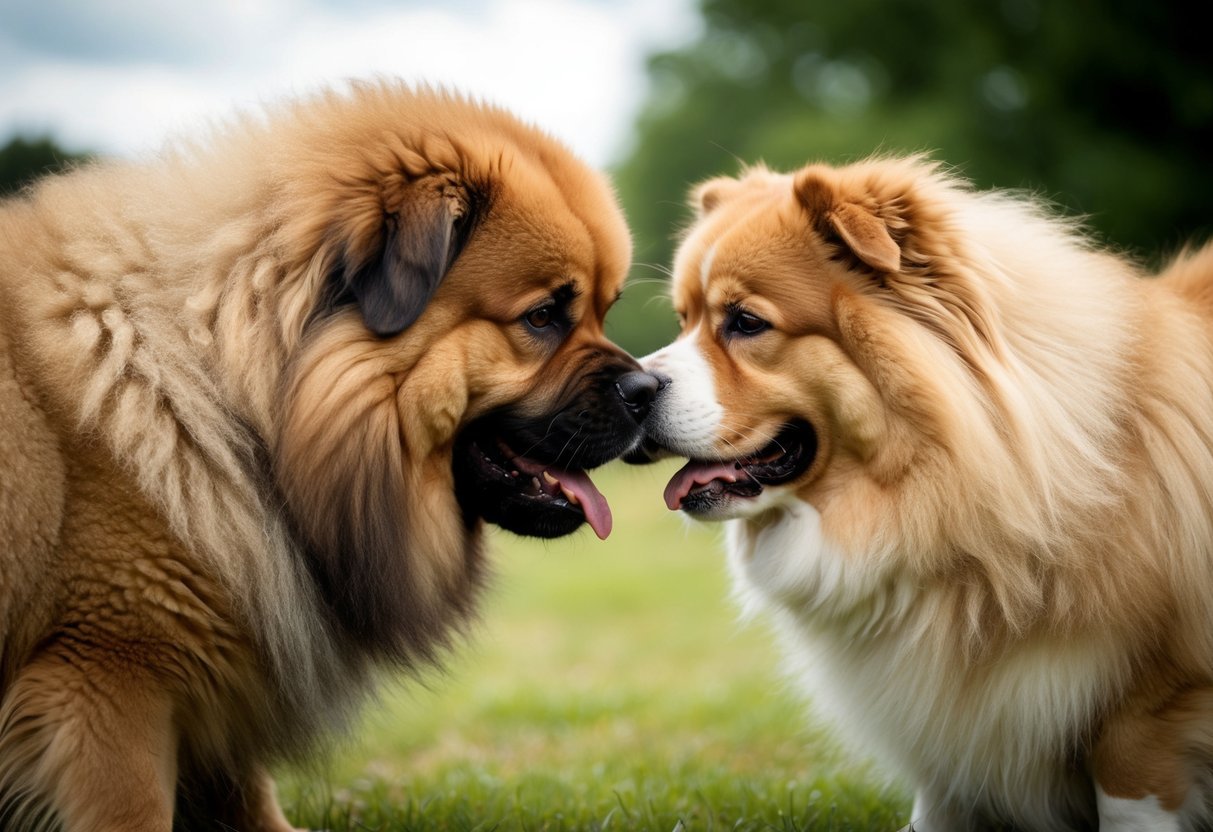
Understanding the temperament and behavior of Malamutes and Huskies is key when trying to tell them apart.
These traits influence their energy levels and social habits, which are crucial for potential owners to consider.
Energy Levels
Both Malamutes and Huskies are active breeds.
However, their energy levels can differ quite a bit.
-
Malamute: These dogs have a high energy level, but they also enjoy downtime. They can be playful and love outdoor activities, but they tend to be calmer indoors. Their strength means they need regular exercise to maintain health.
-
Husky: Huskies are known for their boundless energy. They require frequent exercise and thrive on being active. If they don’t get enough exercise, they might become destructive out of boredom.
Knowing how active each breed is helps you plan for their needs.
Socialization Tendencies
When it comes to socialization, both breeds have unique traits.
-
Malamute: Malamutes are loyal and often bond closely with their families. They tend to be friendly with people but can be somewhat reserved around strangers. Early socialization is important to develop their comfort with new people and pets.
-
Husky: Huskies are generally more outgoing. They often make friends easily and love to be part of a group. They can be more independent, which sometimes leads to stubborn behavior.
Understanding these tendencies can help you create a better environment for either breed.
Living Environment Preferences
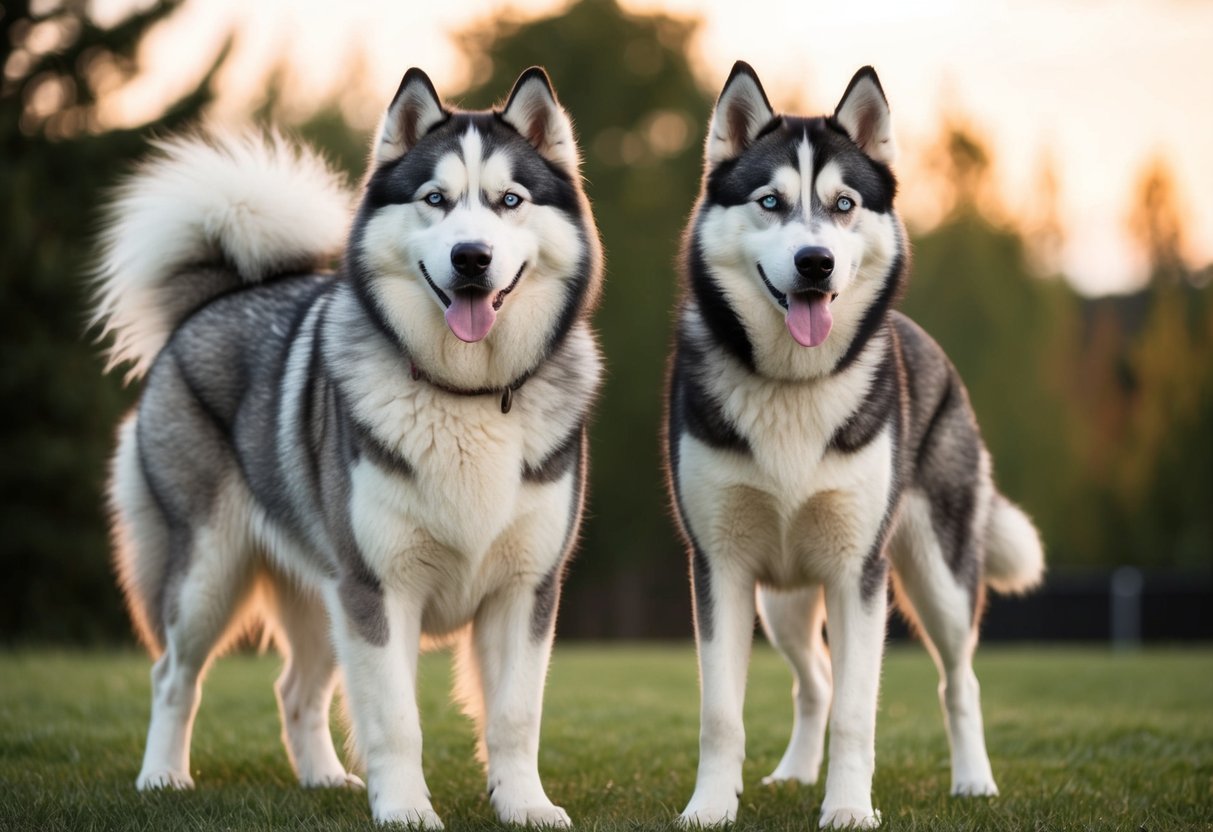
When it comes to living spaces, Huskies and Malamutes have different needs.
Huskies are medium-sized dogs that adapt well to smaller homes or apartments.
They thrive with a good amount of exercise and playtime outside.
If you have a yard, that’s a plus!
Malamutes, on the other hand, are larger and need more space.
They are best suited for homes with ample room to roam and play.
A big yard or access to open areas is ideal for them to stretch their legs.
Key Differences:
-
Huskies:
- Size: Medium
- Ideal Environment: Apartments or smaller homes
- Space Needs: Daily exercise, good for active families
-
Malamutes:
- Size: Large
- Ideal Environment: Larger homes with yards
- Space Needs: Requires more space to be comfortable
Both breeds love to be outdoors.
They enjoy cold weather due to their thick coats, so having a yard where they can enjoy the chill is great for both.
Keep in mind that both dogs need regular activity.
It’s important to understand your living environment to choose the right breed for your lifestyle.
Frequently Asked Questions
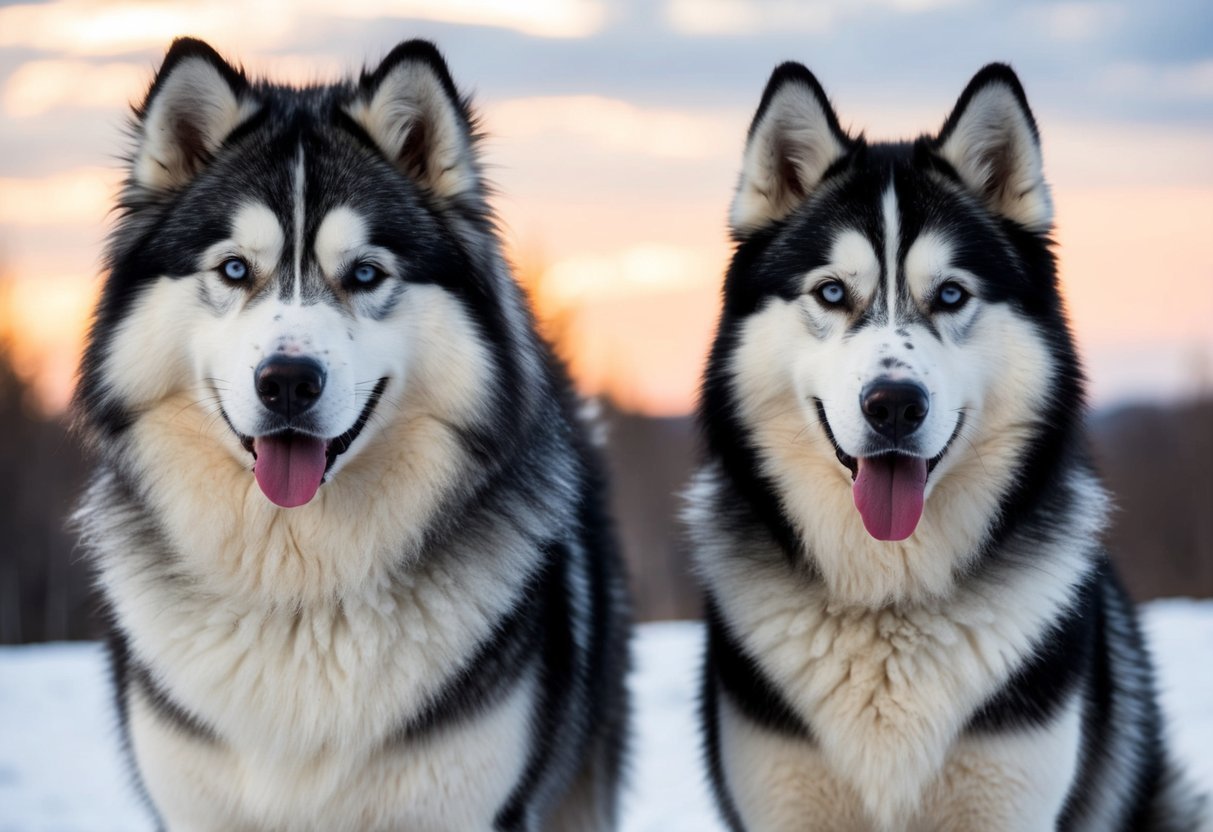
When trying to tell a Malamute from a Husky, you might have a few questions.
Here are some specific answers to help clarify the differences between these two breeds.
What are the key personality differences between a Malamute and a Husky?
Malamutes tend to be more laid-back and stubborn, while Huskies are known for their high energy and friendliness.
If you’re looking for a companion for outdoor adventures, a Husky may be more suitable.
Malamutes are often more independent.
Can you distinguish between a Malamute and Husky by size alone?
Yes, size is a helpful factor.
Malamutes are larger, generally weighing between 75 to 100 pounds.
In contrast, Huskies are smaller, typically weighing around 35 to 60 pounds.
Height also varies with Malamutes standing about 23 to 25 inches tall, while Huskies range from 20 to 24 inches.
What are the visible differences in appearance between Huskies and Malamutes?
Huskies have a more slender build and a fluffy coat, while Malamutes are stockier and have denser fur.
The head shape also differs; Huskies have a more elongated face, while Malamutes have a broader, more powerful head.
How can you tell a Malamute and a Husky apart as puppies?
As puppies, Malamutes are usually bigger and heavier than Huskies.
You can also notice their coat types; Malamute pups often appear fluffier.
However, both breeds have similar primary markings, which can make them challenging to distinguish at a very young age.
What are some tail characteristics that help identify a Malamute versus a Husky?
Malamutes typically have a curled tail that rests over their back.
Their tails are bushy and full.
Huskies, on the other hand, usually have straighter tails that can be carried high but often hang down when relaxed.
What eye colors are common in Alaskan Malamutes?
Alaskan Malamutes typically have brown eyes, although some may have blue.
Meanwhile, Huskies are known for their striking blue eyes or even one blue and one brown eye.
This makes eye color a key difference when identifying these breeds.

